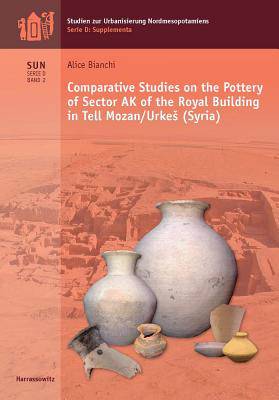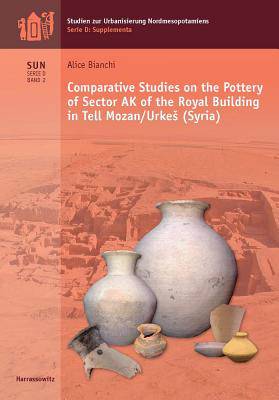
- Retrait en 2 heures
- Assortiment impressionnant
- Paiement sécurisé
- Toujours un magasin près de chez vous
- Retrait gratuit dans votre magasin Club
- 7.000.0000 titres dans notre catalogue
- Payer en toute sécurité
- Toujours un magasin près de chez vous
Comparative Studies on the Pottery of Sector AK of the Royal Building in Tell Mozan/Urkes (Syria)
Alice Bianchi
Livre relié | Anglais
351,45 €
+ 702 points
Description
This publication is based on the study of the ceramics unearthed in that area of Tell Mozan, ancient Urkes, which hosted the royal palace of the city, excavated since 1990 by the team of the International Institute of Mesopotamian Area Studies (IIMAS). The material was retrieved in area AK, the service wing of the palace, and has been assigned by the excavators to three main occupational phases covering the last quarter of the third millennium BC. The focus of Alice Bianchi's study lies on the relation of this material to the pottery retrieved at several sites of the Syrian Jazirah and of neighbouring regions such as the Balikh valley, the Iraqi Jazirah and the Upper Tigris valley. The first main result of the pottery analysis is the exposition of the material retrieved in area AK by phases and shape types, which is followed by a comparative analysis including ceramics from many other sites of the Syrian Jazirah and the neighbouring regions. The outcomes are summarized in a final chapter, first regarding some specific aspects of the manufacture, like peculiar ware types and decoration patterns; secondly, the shape types are presented, underlining their development in the Early Jazirah IV and V periods as well as their geographical diffusion. With its new aspects to the chronological and regional diffusion of specific pottery shape types and wares, this publication contributes to the understanding of the cultural development of the Syrian Jazirah in the last quarter of the third millennium BC and its exchange and influences with the surrounding areas.
Spécifications
Parties prenantes
- Auteur(s) :
- Editeur:
Contenu
- Nombre de pages :
- 720
- Langue:
- Anglais
Caractéristiques
- EAN:
- 9783447067492
- Date de parution :
- 01-10-12
- Format:
- Livre relié
- Format numérique:
- Genaaid
- Poids :
- 3006 g

Seulement chez Librairie Club
+ 702 points sur votre carte client de Librairie Club
Les avis
Nous publions uniquement les avis qui respectent les conditions requises. Consultez nos conditions pour les avis.






